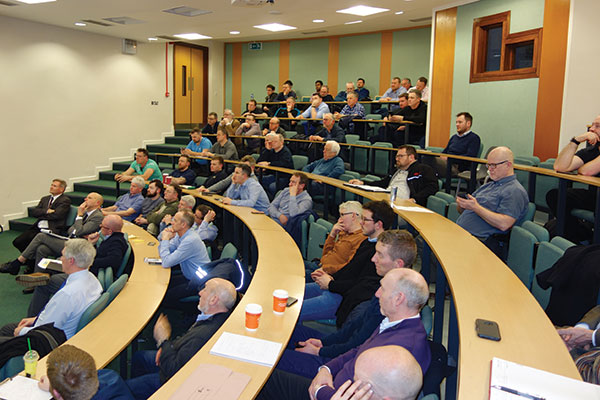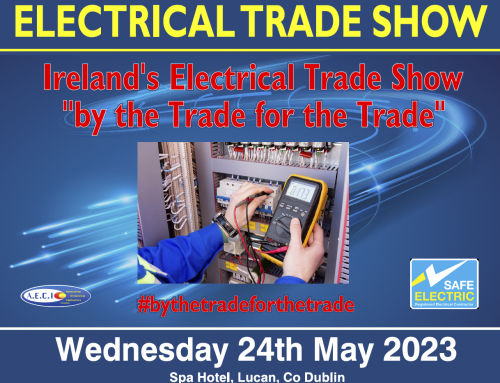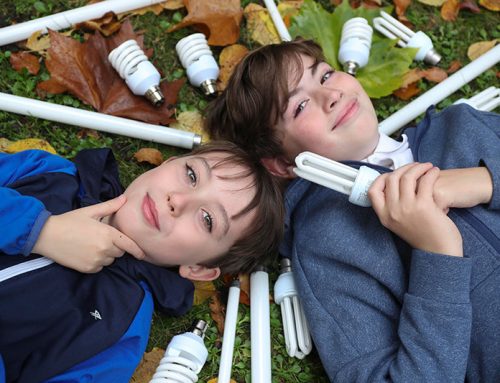
A packed Auditorium with Lively Debate
The National Standards Authority (NSAI) have been running a number of events across the country regarding Ireland’s new Wiring Rules, also known as Irish Standard I.S. 10101:20xx. This document has been issued for Public Consultation until the 15th March. Until this date the electrotechnical Industry has the opportunity to provide feedback on the draft Standard which will replace the existing National Wiring Rules in 2019. Electric.ie attended the event in D.I.T in Aungier street.
After an introduction by Steward Hickey, the Senior Standards Officer of the NSAI, the large attentive crowd were brought through the key changes in these new rules by Charles Dunn the chairman of TC2. Assisted by John Clare of Safe Electric and Paul Dunne of Dublin City Council. Interesting debate followed as issues were raised such as implications that arise out of having RCD’s in lighting circuits, AFDDs, the EMC directive and questions around the domestic distribution board that will now be required to be manufactured with non-combustible material. These changes are so important to the industry. You have until 15th March to have your say. We include a summary of the key points again below. I.S.10101 – General What were known as “Parts” (i.e. Parts 1-7) in ET101:2008 are being relabelled as “Chapters” in I.S.10101:20xx. This change will serve to enhance readability of the document into the future.
I.S.10101 – Chapter 1: Scope Chapter 1 has not changed, and the scope still refers to the fixed wiring installation right up to the plug or isolator. Equipment plugged into or wired into the isolator is handled under other standards, but not by the National Rules for Electrical Installations. I.S.10101 – Chapter 2: Definitions Definitions are now all contained in Chapter 2 to enhance readability. The definitions list has been expanded and certain definitions have been modified to align with the definitions provided in the International Electrotechnical Vocabulary. I.S.10101 – Chapter 4 – Protection for Safety Clause 411.3.4 Residual Current Devices (RCDs) will now be required to be installed on lighting circuits in domestic premises. Clause 421.7 Arc Fault Detection Devices (AFDDs) will now be recommended for circuits installed in locations with particular risk, such as;
- in premises with sleeping accommodation;
- in locations with risks of fire due to the nature of processed or stored materials, i.e. BE2 locations, (e.g. barns, wood-working shops, stores of combustible materials);
- in locations with combustible constructional materials, (example = wooden buildings);
- in fire propagating structures
- in locations with endangering of irreplaceable goods
Clause 422.4 Locations with combustible constructional materials Wiring connections in hollow walls may refer to either modular pods or modular wiring assemblies with connections being accessible.
I.S.10101 – Chapter 5 – Selection and Erection of Equipment Clause 512.1.5 The above Clause will require sign off by the appropriate person that the installation complies with the Electromagnetic Compatibility (EMC) Directive 2014/30/EU. The installation will of course apply only to the fixed wiring and switchgear, and not to any appliance connected after the isolator of socket.
Clause 527 The above Clause requires all cables to be rated Class Dca s1b,d2,a2 in accordance with EN50575.
Clause 530.6.1

Distribution boards in domestic installations will need to be manufactured from “non-combustible material”. This requirement builds on the safety criteria specified by ET101:2008 which required distribution boards installed in escape routes to behave like a fire proof enclosure, with the exception that the said clause did not apply to domestic premises. Many domestic premises have distribution boards installed in the main entrance hallway, which is the escape route, and therefore the Clause 530.6.1 will improve protection for the escape route. Non-combustible material may include steel or metal boards. Clause 531.3.3 Residual current devices (RCDs) Type AC are not recommended in new installations. RCD technology has improved greatly, and alternative devices now provide better protection. Clause 534 This is a complete new section; provides details on selection of Surge Protection Devices (SPDs) including wiring diagrams, especially where lightning protection will be installed in a building. I.S.10101 – Chapter 6 : Inspection and Testing Chapter 6 has been completely revised to align with the CENELEC Standard. Model certificates have now been removed. As previously mentioned, CRU now oversee the inspection and verification process, and certificates are issued by Safe Electric. It is necessary to highlight that certification will soon transition to an online format and it is for this reason model certificates are no longer included in the Standard. I.S.10101 – Chapter 7: Special Locations The associated CENELEC 60364 series of HDs have been updated which is now reflected in I.S.10101;20xx Part 722 Supplies for Electric Vehicles: Charging for Electric Vehicles was published as an amendment to ET.101:2008 in 2017. This section is now consolidated as Part 722 in Chapter 7 and has unchanged from the version released previously. Part 710 Installations in Medical Locations Part 710 has been revised in accordance with HD 60364-7-710:2012 and contains several changes including; Clause 710.411.6.3.101 Now requires risk assessment of “other electrical equipment” before being used in the patient environment. Clause 710.415.2.2 Now requires the resistance of supplementary protective bonding conductors in group 1 as well as group 2 medical locations, to not exceed 0.2 Ohms. Clause 710.55.101 Now requires the intended use of a medical location to be considered with regard to the decision on the number of socket outlets to be protected by a single RCD. Clause 710.55.102
Now requires that socket outlets of medical IT systems in group 2 locations be un-switched, coloured blue, and clearly and permanently marked “Medical Equipment Only”. Part 730 Onshore Units of Electrical Connections for Inland Navigation Vessels This section is entirely new. I.S.10101 – Chapter 8: Energy Efficiency This section is entirely new and provides recommendations and guidelines on design and erection of electrical installations to optimise energy, including metering and load control and minimisation of losses in conductors. What Happens Next? NSAI seeks input from the electrotechnical industry on I.S. 10101:20xx. Anyone who wants to view the draft I.S.10101:20xx Standard and submit comments can do so by logging onto “Your Standards, Your Say” web portal through the NSAI website at http://www.nsainep.ie/. For comments to be considered, they must be submitted on the Official NSAI commenting template. The public consultation phase will last for three months from December 3rd, 2018 to March 15th, 2019.

Following the public enquiry, all comments received will be reviewed by TC2 (committee) experts and used to enhance the quality of the final Standard before publication in 2019 . Post publication, there will be a six-month transition period before the new requirements come into effect. However, installations may be designed in accordance with the ‘new version’ before that date.


